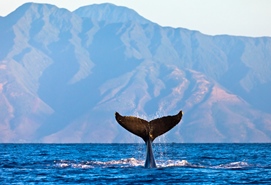
The Consumer Travel Survey from the Travel Leaders Group always offers some interesting results. A few of the 2015 highlights from the recent responses of 3,300-plus American travelers:
- Australia tops the “ultimate dream international destination” list for the fourth consecutive survey. Other top choices are Italy, Ireland, New Zealand and a Mediterranean cruise
- 67% of vacationers will travel by land, 6% plan cruises and 27% are looking to do both
- The top responses (multiple answers allowed) to how far people plan to travel are: Within the U.S. and farther than a bordering state, 71%; within home state, 43%; bordering state, 37%; Canada/Mexico/Caribbean, 31%; international, 24%
- Interest in travel to Cuba: 39% say no way (down from 47.6% a year earlier), 35% will consider it and 23% are ready to go either now or when they believe Cuba is ready for Americans

 You might have guessed that more Americans would be spending their tax refund money on paying down debts (like a mortgage or student loan) – one of the main pieces of financial advice during this year’s tax season.
You might have guessed that more Americans would be spending their tax refund money on paying down debts (like a mortgage or student loan) – one of the main pieces of financial advice during this year’s tax season. While we can’t make a prediction with 100% certainty, we can assign probabilities to the next trend for the U.S. stock markets. The major U.S. market indexes (Dow Jones 30, S&P 500 and NASDAQ Composite) all reached new highs for the rally on or about April 28. Additionally, technical indicators of the market’s underlying health were all strongly positive as well. The correction that has ensued since April 28 has erased between 9% and 11% of the averages’ value. In a less tumultuous time, this kind of performance would be seen as a normal correction and not the start of a new bear market.
While we can’t make a prediction with 100% certainty, we can assign probabilities to the next trend for the U.S. stock markets. The major U.S. market indexes (Dow Jones 30, S&P 500 and NASDAQ Composite) all reached new highs for the rally on or about April 28. Additionally, technical indicators of the market’s underlying health were all strongly positive as well. The correction that has ensued since April 28 has erased between 9% and 11% of the averages’ value. In a less tumultuous time, this kind of performance would be seen as a normal correction and not the start of a new bear market. The publication International Living just released its 30th annual Quality of Life Index, which attempts to answer the question, "Where is the best place to live?"
The publication International Living just released its 30th annual Quality of Life Index, which attempts to answer the question, "Where is the best place to live?" 